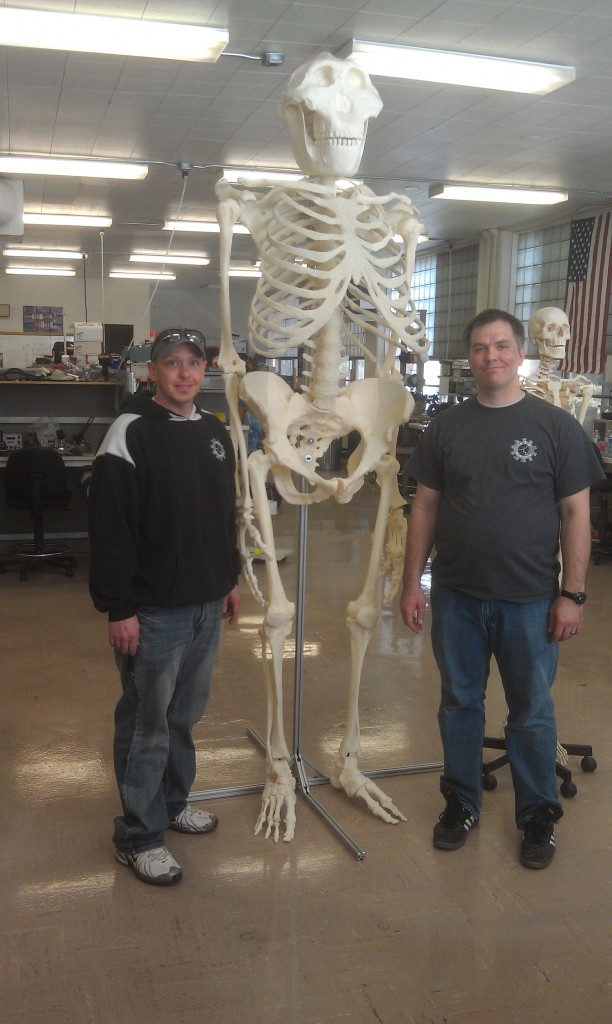Idaho State University instructors Geran Call and Rob Shroll put 1,600 hours into printing a 3-D mock skeleton of bigfoot
November 13, 2015
POCATELLO — Idaho State Universitys Geran Call and Rob Shroll spent 1,600 hours physically printing a 3-D mock bigfoot skeleton for the History Channel to use on its show “Bigfoot Captured” that aired Nov. 9.
The project took a month and a half to complete by the two instructors in the ISU College of Technology Robotics and Communications Systems Engineering Technology program.
One of the most difficult aspects of printing the skeleton was that the printers had to be monitored for the entire 1,600 hours. Call would have to come back to the school at 2 or 3 a.m. to make sure the sculpture was printing correctly.

“It was fun working with the production company and seeing this whole thing come together,” Call said. “When they came to do the filming I was still finishing a few prints to get it all done in time.”
The production company wanted the mock bigfoot to be built standing, which called for even further tedious work on the skeleton. Call used gun cleaners and rubber points to make joints of the print flexible and movable.
The production company was on campus for two days filming the printer and putting the print together. It took five hours for Call, his wife Kathy, and Shroll to put the model together. Kathy was used in the assembling of the skeleton because of her background as a radiology technician at Blackfoot Medical Clinic. When finished, the print composed of acrylonitrile butadiene styrene, ABS, material stood 8-1/2 feet tall.
“Once I had all of the pieces printed I had to start assembling it,” Call said. “The bones for the arms had to be cut in half and repined together so that they would slide back into position. There were lots of those types of things to get it ready for the show.”
Call had to keep the project out of plain sight. Students were not allowed to take any pictures of the 3-D print. One of the biggest challenges for Call was keeping the project hidden for the last few weeks.
Call was able to keep one of the hands of the skeleton and plans to put it into a display in his office in the ISU Trade and Technical Building.
ISU was asked to print the skeleton because of its reputation in 3-D printing. In the past, ISU has printed a 3-D replica of R2D2, a robot from “Star Wars,” a replica of a robot dog featured on the television program “Doctor Who” and Nerf guns and drones. The printers are located in the College of Technology’s Computer Aided Design Drafting and Robotics and Communications Systems Engineering Technology departments.
The print will be kept in the production office, which has no future plans for it at this time.
“Bigfoot Captured” aired Nov. 9 and featured Jeffrey Meldrum, ISU professor of anatomy and anthropology.
Categories:
